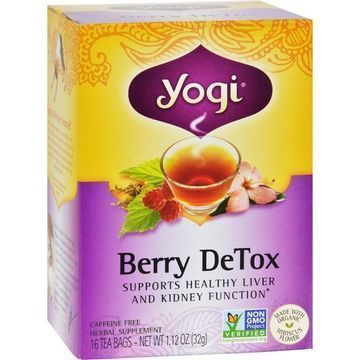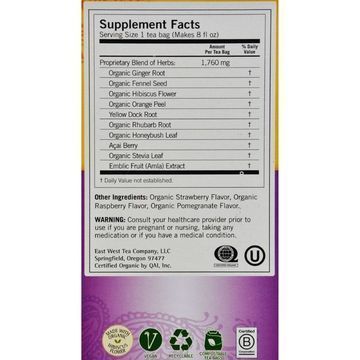| Ginger Root | According to the National Library of Medicine1, part of the NIH (National Institutes of Health), ginger is widely used throughout the world for treating loss of appetite, nausea and vomiting after surgery, nausea resulting from cancer treatment, flatulence, stomach upset, colic, morning sickness and motion sickness. |
|---|
| Fennel Seed | Fennel is used for various digestive problems including heartburn, intestinal gas,bloating, loss of appetite, and colic in infants. It is also used for upper respiratory tract infections, coughs, bronchitis, cholera, backache, bedwetting, and visual problems. |
|---|
| Hibiscus Flower | The fruit acids in hibiscus may work like a laxative. Some researchers think that other chemicals in hibiscus might be able to lower blood pressure; decrease spasms in the stomach, intestines, and uterus; and work like antibiotics to kill bacteria and worms. |
|---|
| Orange Peel | Orange peels are rich in flavonones, powerful antioxidants that help reduce oxidative damage and fight free radicals. |
|---|
| Yellow Dock Root | Yellow dock contains chemicals called anthraquinones, which work as stimulant laxatives. |
|---|
| Strawberry Flavor | The number of chemical ingredients used to make the artificial strawberry flavor in a fast food strawberry shake, for example, is similar, chemically to the number of chemicals in a fresh strawberry. |
|---|
| Rhubarb Root | Rhubarb is used primarily for digestive complaints including constipation, diarrhea, heartburn, stomach pain, gastrointestinal (GI) bleeding, and preparation for certain GI diagnostic procedures. Some people use rhubarb so they have to strain less during bowel movements; this reduces pain from haemorrhoids or tears in the skin lining the anal canal (anal fissures). |
|---|
| Honeybush | The beverage is sweet tasting and has a history of use as a folk remedy, with recent scientific evidence supporting some the tea’s purported effects. Regular consumption of the tea is associated with several long-term and short-term health benefits, making it an excellent alternative tea choice. |
|---|
| Acai | Excellent Source of Antioxidants and Nutrients Some cosmetics and beauty products include acai oil because of its antioxidants. The acai (ah-sigh-EE) berry is a grape-like fruit harvested from acai palm trees, which are native to the rainforests of South America. Very High in Antioxidants: Some studies show that acai fruit pulp is even richer in antioxidants than cranberries, raspberries, blackberries, strawberries, or blueberries. |
|---|
| Raspberry Flavor | Red raspberry is a plant that is the source of a widely eaten, tasty, sweet berry. However, red raspberry fruit and leaf have also been used as medicine for centuries. The therapeutic use of raspberry leaf was first described in 1597 in a book called “The Herbal,” or “A General History of Plants.” Today, red raspberry leaf and fruit are still used as medicine. |
|---|
| Pomegranate Flavor | Pomegranate is used for many conditions, but so far, there isn’t enough scientific evidence to rate pomegranate as effective for any of them. We do know, though, that pomegranate does not seem to be effective for reducing the symptoms of chronic obstructive lung disease (COPD) or improving breathing in people with this condition. |
|---|
| Stevia Leaf | Stevia is an intensely sweet natural sweetener that is harvested around the world from the stevia rebaudiana plant. |
|---|
| Amala Extract | Indian gooseberry is taken by mouth for high cholesterol, “hardening of the arteries” (atherosclerosis), diabetes, pain and swelling of the pancreas (pancreatitis), cancer,upset stomach, eye problems, joint pain, diarrhea, bloody diarrhea (dysentery),osteoarthritis, obesity, and “organ restoration.” It is also used to kill germs and reduce pain and swelling caused by the body’s reaction to injury or illness (inflammation). |
|---|



Reviews
There are no reviews yet.